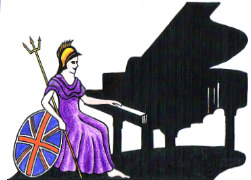Piano Dealers Shops Retailers Selling Pianos,
and Music
Pianos For Sale Pianos for Sale UK

UK Piano Page

from Robert Morley & Company Ltd.
Price: £3,496.00
Date: 10-06-2023 02:04PM
Expiration Date: 10-06-2025 02:02PM

Unit 3C
Bull Lane Industrial Estate
Sudbury, Suffolk CO10 OBD
England
Victoria Works
Benjamin Street
Wakefield, West Yorkshire WF29AR
England
We deal in a wide variety of Pianos traditional &
Verve House
Sunningdale
Ascot, Berkshire SL5 0DJ
England
Handel Pianos is a family run business and our
Unit 2, Crown Centre
Bond Street
Macclesfield, Cheshire SK11 6QS
England
Offers a hand-picked selection of prestigious
5 High Bank Side
Off St. Petersgate
Stockport, Cheshire SK1 1HG
England
we supply all styles of Acoustic Piano, from
Music Festival for performers and guests Our 10th
18-06-2022 01:30PM
The Morecambe Bay Piano Group was set up to extend
11-12-2021 02:00PM
The Morecambe Bay Piano Group was set up to extend
08-01-2022 02:00PM
The Morecambe Bay Piano Group was set up to extend
12-02-2022 02:00PM
The Morecambe Bay Piano Group was set up to extend
10-08-2024 02:00PM
The Morecambe Bay Piano Group was set up to extend
14-09-2024 02:00PM
The Morecambe Bay Piano Group was set up to extend
12-10-2024 02:00PM
The Morecambe Bay Piano Group was set up to extend
09-11-2024 02:00PM